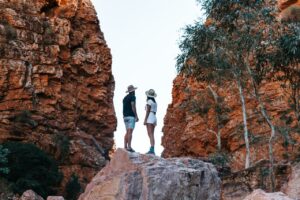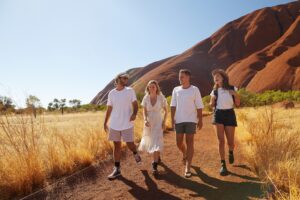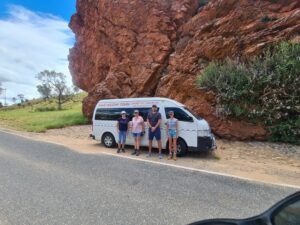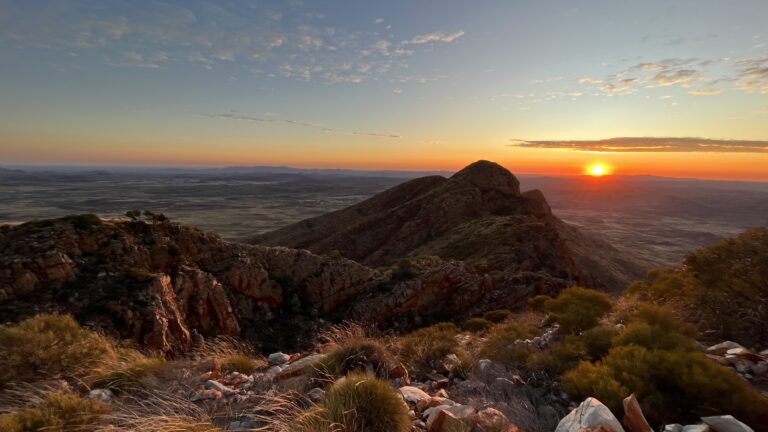🎶 On the fourth day of Christmas, Norther brought me…
an adorable Black- Flanked Rock-Wallaby🦘
And the most stunning sunrise at West MacDonnell National Park!
Black-flanked Rock Wallaby in West MacDonnell National Park
COMMON NAME: Black-Flanked Rock Wallaby
SCIENTIFIC NAME: Petrogale lateralis
TYPE: Mammal
DIET: Herbivore
SIZE: 50 centimetres tall
What does the Black-Flanked Rock Wallaby look like?
The Black-Flanked Rock Wallaby is also known as a Black-Footed Rock Wallaby. This is due to a black stripe that extends from between the ears to just below the shoulders. It is paler on the chest and dark brown on the belly. Their tiny faces are dark with a white or sandy-brown cheek stripe. (A little spooky, right?!) They have a thick and woolly coat around the rump, flanks and base of the tail. There are colour variations between the subspecies.


These little animals are extremely agile, and they have strong hind legs and feet. The textured pads on their hands and feet allow them to move quickly and easily across their rocky habitats. (Speedy little buggers!)
Did you know that they breed year-round, with peaks during high rainfall seasons! They also give birth to their babies (called joeys), and the joey remains in the pouch for 6-7 months. They are soooo cute tooo! They start breeding from 18 months of age, and the life span is up to 12 years!!!
Where does the Black-Flanked Rock Wallaby Live?
Keep your eyes peeled for the shy but fast black-flanked rock-wallaby. This adorable little animal is usually found darting among the rocky West MacDonnell National Park outcrops. (Like Sonic the Hedgehog) Historically this animal has been patchily distributed in central and southern Western Australia. In winter, you might catch it sunbathing and it is a sight like no other! It prefers to live among the rocks as this is essential to the wallaby’s survival. Wallabies live in groups called mobs. Mobs of black-flanked rock wallabies can range in size from 10 to 100 individuals. (Like a party or your school classroom… )
Habitat destruction, predation by foxes and feral cats, and competition for food and shelter have exacted a terrible toll. Scientists report many local extinctions and the wallaby’s distribution is now greatly reduced.
Where does the Black-Flanked Rock Wallaby Eat?
Rock-wallabies are generally crepuscular and nocturnal, meaning they are most active at twilight and at night. Ohhh, they go dancing in the moonlight! At dusk, they emerge to feed on a variety of grasses, herbs, barks, leaves, seeds and fruit. They tend to browse close to rocky refuges to provide a quick escape from predators. Stranger Danger! The Black-Footed Rock Wallaby is preyed upon by dingoes and foxes so they have to be on the lookout 👀.
Aren’t these shy and agile animals sooo cute? They kind of look cuddly too! Now that you know ALLLL about them, It’s time to colour it in. Share this with your friends and see who can do the most creative design. Have fun with it and maybe draw their caves around them.
Wanna feature your creation on our Instagram? Email us [email protected] and we’ll share the most creative design on our Instagram page!
Yours in adventure,
Have a Merry Norther Christmas
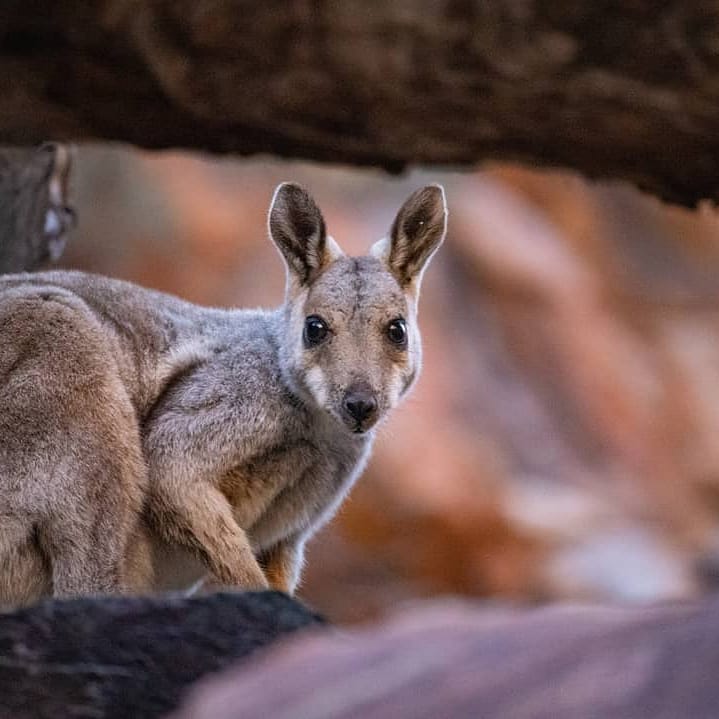
Download The Black-Flanked Rock Wallaby Colouring Page
Welcome to the land of beautiful gorges and even more stunning views….

West MacDonnell National Park
Known as Tjoritja by the Traditional Owners, the area is integral to the local Aranda Aboriginal culture. This exciting land is an adventurer’s dream come true!
It has camping, swimming, hiking, epic sunsets and sunrises. To top it all off it has gorges that are home to a variety of plants and animals, some of which are remainders of a bygone era of tropical forests, relics unique to the area.
What to do in West MacDonnell National Park?
Filled with lots to do, West MacDonell National Park is one of the jewels of the Red Centre. There are trails for casual and avid walkers, including the famous Larapinta Trail! This trail runs through the heart of Central Australia and extends over 230 kilometres. It is divided into 12 sections with each taking a day or two. It covers the most beautiful spots in the park and is a great way to see it all!
The Park’s epic spots include the Simpsons Gap, Ellery Creek Big Hole, Ormiston Gorge, Glen Helen and Mount Sonder all of which are along the trail! The beauty of the park will knock your socks off, especially Ellery Creek Big Hole! It is a spectacular waterhole in Ellery Creek that cuts through gorges in the West MacDonnell Ranges. It is perfect for walking and swimming. and picnicking. Remember to bring your camera, you will want to use it here.
Click here for a list of hikes and swims at West MacDonnell National Park
One of the other notable spots in the park is Redbank Gorge. It offers a refreshing stop with cold waters to float in and waterholes perfect for swimming. It is very cold so you will need to dry up quickly and soak in some sun. Take note of the wildlife too: there are numerous species of anything from birds to reptiles. Are you keen to explore our scenic sights yet?
When is the best time to wander West MacDonnell National Park?
The ideal time to visit is the months between April and September. This is mainly because the park is at a high risk of flooding the rest of the months as it will be the wet season. However, the West MacDonnell National Park remains open during the wet season too.
Here is the complete guide to the best times to visit West MacDonnell National Park
For more recommendations check out these great experiences:
Or for places to stay see here:
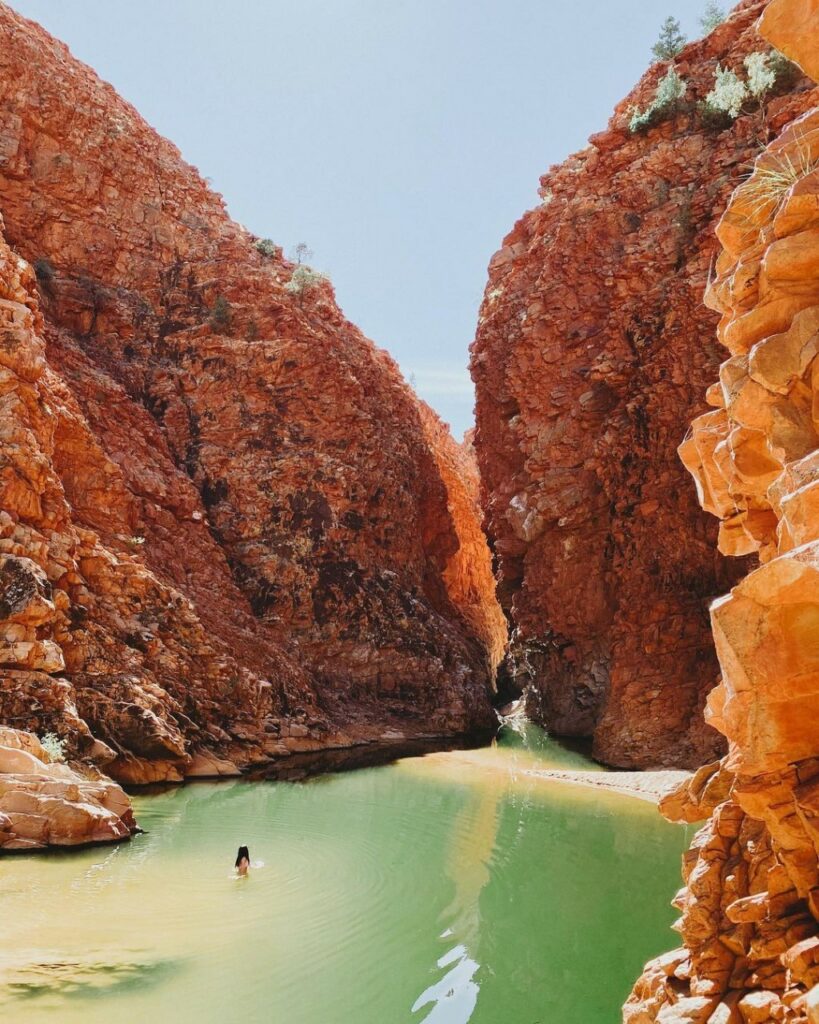
Come and Wander WestMacs! We would love your feedback on this page – please comment below if you’ve been to West MacDonnell National Park or seen a Black-Rlanked Rock Wallaby.
Norther would like to invite you to explore more about the beauty of West MacDonnell National Park here. And… as always you can get more inspiration for other National Parks & Destinations to visit by following @northerhq or get your West MacDonnell National Park daily fix @westmacdonnellnationalpark
*Cover image is by @venturingvervuurts on Instagram.

